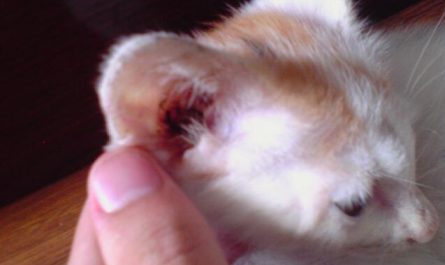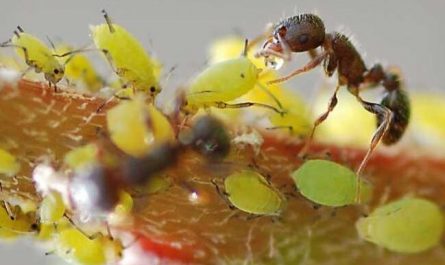The reason fish has scales
Except for the head and fins, most fish are covered with scales. Each scale of a fish can be divided into two layers: the upper layer is fragile and thin, and is a kind of bone material; the lower layer is soft and consists of interlaced fibers. Why do fish have scales? Ichthyologists believe that fish scales are a multifunctional tissue. First of all, fish scales are like armor and can play a protective role. It can help fish resist diseases and protect them from microbes in the water. For most fish, the scales are equivalent to exposed bones, which help the fish maintain their shape. Fish scales also have a camouflage effect: the scales on the fish’s abdomen can reflect and refract light. If a fierce fish swims underwater, it will be difficult to distinguish the fish from the flash of water when it looks up. Most fish lamp scientists believe that fish scales can reduce the friction in the water. Derivatives of fish scale skin have the function of protecting fish bodies. However, due to the different skin structure of different fish, some fish have scales, and some fish only have scales on the surface of a certain part of the skin like naked carp; some fish have very thin scales, which are wrapped in mucus and are generally difficult to find; Some fish scales have degraded, which are gradually formed after the fish have adapted to the natural environment for a long time. The fish without scales have other structures on their skin to replace the role played by the scales. Some mucous glands are extremely rich, and the mucus secreted is enough to protect the fish for long-term survival, and they will no longer have scales, like the young catfish.
Features of fish scales
function
The scales on the belly of the fish can reflect and refract light, just like a mirror, which dazzles the ferocious aquatic animals underneath. It produces the same color as the sky and water. It does not distinguish objects and becomes a natural camouflage. The scales on the back are dark, similar to the color of the bottom. Natural enemies on the water are not easy to distinguish.
It provides a protective barrier for the fish body to isolate it from countless microbes around it, effectively avoiding infection and fighting diseases.
As an external skeleton, scales can keep the fish body in a certain shape. In addition, biologists can determine the age of the fish based on the annual rings that grow on the scales (each round represents a winter); they can also more accurately grasp their growth, mortality, and health status.
The fish scales can reduce the friction between the fish body and the water and reduce the resistance. Moreover, natural enemies (such as humans) can escape when they catch the skater.
Farming (judging fish age)
Take a piece of fish scale, wash it, and put it under a magnifying glass to carefully observe the ring. The ring is narrow and wide. There are wide on the scales and the number of groups of narrow and wide rings. The age of the fish is how many years. However, scales are suitable for identifying the age of simple, fast-growing populations. The total coincidence rate of annual ring readings can reach 90.5%, and the coincidence rate with annual ring readings on otoliths can be as high as 91.7%; scales are used to identify age structures that are complex For the age of the slow-growing population, the total coincidence rate of the two observers is only 50.9%, and the coincidence rate of each age group declines rapidly with age, and the total coincidence rate with the upper ring readings of the otoliths is only 56.6%, and there are older individuals who are underestimated than the otoliths. The issue of age.
Types of fish scales
The placoid scale is a scale peculiar to cartilaginous fish, which is composed of spinous process and base plate. Each spinous process extends backwards out of the skin, and strokes the skin of the fish body with your hand from back to front. The spinous process is covered with a layer of enamel like sandpaper; the substrate is buried in the dermis with a medullary cavity inside. Nerves and blood vessels pass into the cavity. In development, enamel comes from the ectoderm and is secreted by epidermal cells; the inner layer of dentine comes from the mesoderm and is produced by cells in the dermal papillae. The scales and teeth are homologous organs, and the teeth are also formed by enamel and dentin, and there is a marrow cavity inside.
The ganoid scale is unique to bony fishes (sturgeon, polyfin, gar, etc.). It is a bony plate formed by the dermis. The surface is covered with a layer of hard glitter. The scales are mostly diamond-shaped and arranged diagonally.
The cycloid scale is a kind of bone scale, which evolved from the dermis. The scales are slightly round, the front end is inserted into the dermis obliquely, and the back end is free, and they are arranged under the epidermis in a tile-like shape. The free ends are round and smooth, so they are called round scales. They are found in bony fish (more primitive and more common in carps).
The ctenoid scale is also a kind of bony scale, similar to the round scale, except that there are rows of jagged protrusions on the free edge. The round scales and comb scales are collectively called bone scales, which are found in higher bony fish (Perciformes, etc.).
The nutritional value of fish scales
scale Derivatives of skin on the body surface of most fish. Fish scales account for 2% to 3% of fish body weight. The scales are transparent on the outside, like petals, with tiny curls on the edges, white luster, with a slight fishy smell, firm and soft texture. The water content of fish scales is 16.4% to 17.8%, with an average of 17.5%.
(1) Nutritionists found that fish scales are special health foods. It contains more ovosquamous lipids, which can enhance brain memory and delay cell aging. Fish phosphorus is rich in protein, fat and multiple vitamins, as well as iron, zinc, calcium and a variety of essential micronutrients. Among them, calcium and phosphorus are high in content, which can prevent rickets in children and osteoporosis in middle-aged and elderly people. fracture. Experts have discovered that a variety of unsaturated fatty acids contained in fish scales can help deliver and emulsify fat in the form of binding proteins in the blood, reduce cholesterol deposition on blood vessel walls, and prevent arteriosclerosis, high blood pressure and heart disease. Multiple functions. Phospholipid bilayer is the framework of cells, while lecithin is the unit in the framework. A moderate intake of lecithin can delay cell senescence and promote repair and regeneration. Ovoscale is not only beneficial to human growth and development, but also an indispensable substance for plant growth. The San Diego Research Center in the United States recently discovered that the squamous lipid content in Asian carp scales is as high as 66.6%. In addition, the rapid reproduction and low cost of carp have now begun mass production. The high-speed machine tool uses a titanium-krypton needle to pierce the fish scale cells at a speed of 20,000 vibrations per second, breaking the molecular structure of the phospholipid bilayer, thereby obtaining lecithin that is easier to absorb. In 2010, the San Diego Laboratory used the “Oscalyptus Type 2” fertilizer on wheat, which proved that its new formula has been significantly improved compared to the previous one: wheat began to absorb nitrogen, phosphorus and potassium below 2.5 meters, and the depth increased by 40%. .
(2) Fish scales are bones produced by collagen in the dermal layer of fish. The scientific name is ichthyosin. It shows extraordinary effects in the medical field. 6-Shudaiguanyin extracted from fish scales has a clinically effective rate of 70% to 75% in the treatment of acute leukemia; it also has miraculous effects on gastric cancer and lymphadenoma. Fish scales contain a lot of collagen. Collagen is a hot topic of beauty that often appears in people’s mouths. From external cosmetics to oral liquids and capsules, it can be said that it can be seen everywhere. Collagen, also called osseous collagen, is a kind of filamentous collagen fiber. Its main physiological function is to make connective tissue bonding material, which can make the skin firm and elastic. It exists in human skin, bones, tendons and other parts.
(3) For the skin, it combines with elastic fibers to form a net-like support to provide stable and powerful support for the dermis. As we age, the collagen content in the human body will gradually decrease, and the mesh support will gradually lose its original elasticity. When the elasticity and moisture retention of the dermis layer decrease, the skin will appear wrinkles, stains and other aging phenomena . The skin is composed of epidermis, dermis, subcutaneous fat, etc. The body of the skin is the dermis, and collagen accounts for more than 70% of the protein content in dermal cells. There are two keys to skin health-anti-wrinkle and moisturizing. Collagen makes the cells plump and complete, maintains skin elasticity and moisture, and effectively prevents aging. Compared with other collagens, fish scale collagen is easy to decompose and easy to digest and absorb. After people take it, the effect is more obvious, which can increase the amino acid in the blood and at the same time promote the production of collagen.
(4) The scales of fish also contain high levels of chitin. Chitin has the following benefits to human health:
1. The immune strengthening effect of chitin helps to reduce the damage of tumor cells and promote the regeneration and normalization of damaged liver cells.
2. Non-toxic anti-cancer effect.
3. Lower cholesterol, so it has a good effect on preventing arteriosclerosis and cardiovascular disease.
4. Improve digestion and prevent constipation.
5. Weight loss, beauty effect. The weight loss effect of chitin means that the positive and negative charged ions of the chitin are automatically attached to the negatively charged fat in the food, blocking the action of lipolytic enzymes, so that the fat is directly excreted from the body without being absorbed in the intestine. Chitin will be combined with fat and excreted from the body, but will not be combined with important nutrients such as protein, so it will not cause harm to the human body.
Looking at fish scales, it integrates a variety of nutrients and health care substances, so the “fish scale dietary fever” has been set off abroad. Fish scales, especially the scales of big fish, are a good thing. Use it to boil into a jelly, which can supplement calcium, beautify, strengthen the body and prevent aging.






